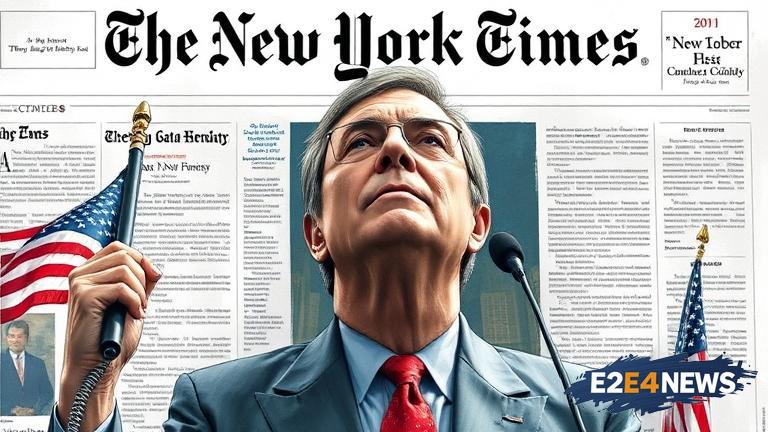The New York Times has been a staple of American journalism for over a century, but in recent years, the publication has faced criticism for its perceived liberal bias. A recent article published by the Daily Caller highlights the newspaper’s tendency to portray conservatives in a negative light, often relying on stereotypes and caricatures. This has led to a backlash from conservatives, who feel that their views and values are not being represented fairly. The article cites several examples of the Times’ biased reporting, including a piece that referred to conservatives as ‘extremists’ and another that implied that conservative voters are motivated by racism. Many have taken to social media to express their outrage, with some calling for a boycott of the newspaper. The controversy has sparked a wider debate about the role of the media in shaping public opinion and the importance of fair and balanced reporting. Some argue that the Times’ liberal bias is a result of its location in New York City, where liberal views are prevalent. Others point out that the newspaper has a long history of promoting progressive causes and has often been at the forefront of social justice movements. However, critics argue that this bias has led to a lack of diversity in the newspaper’s reporting, with conservative voices often being marginalized or ignored. The Times has responded to the criticism, stating that it strives to provide fair and balanced reporting, but many remain skeptical. The controversy has also raised questions about the impact of media bias on the public’s perception of conservatives and the potential consequences for the country’s political discourse. As the debate continues, it remains to be seen how the New York Times will respond to the criticism and whether it will make an effort to provide more balanced reporting in the future. The newspaper’s reputation as a trusted source of news is at stake, and it will be important for it to address the concerns of its critics in order to maintain its credibility. In addition to the backlash from conservatives, the controversy has also sparked a wider discussion about the importance of media literacy and the need for readers to be critical of the information they consume. Ultimately, the controversy surrounding the New York Times’ portrayal of conservatives highlights the need for a more nuanced and balanced approach to reporting, one that takes into account the diversity of views and opinions that exist in the United States. The newspaper’s ability to provide fair and balanced reporting will be crucial in maintaining the trust of its readers and ensuring that it remains a relevant and respected source of news. Furthermore, the controversy has also led to a re-examination of the role of the media in shaping public opinion and the potential consequences of biased reporting. It has also sparked a debate about the importance of diversity and inclusion in the media, with many arguing that newsrooms should strive to reflect the diversity of the communities they serve. The New York Times has a long history of promoting diversity and inclusion, but the controversy has highlighted the need for the newspaper to do more to ensure that its reporting is fair and balanced. In conclusion, the controversy surrounding the New York Times’ portrayal of conservatives is a complex issue that highlights the need for a more nuanced and balanced approach to reporting. The newspaper’s ability to provide fair and balanced reporting will be crucial in maintaining the trust of its readers and ensuring that it remains a relevant and respected source of news.
